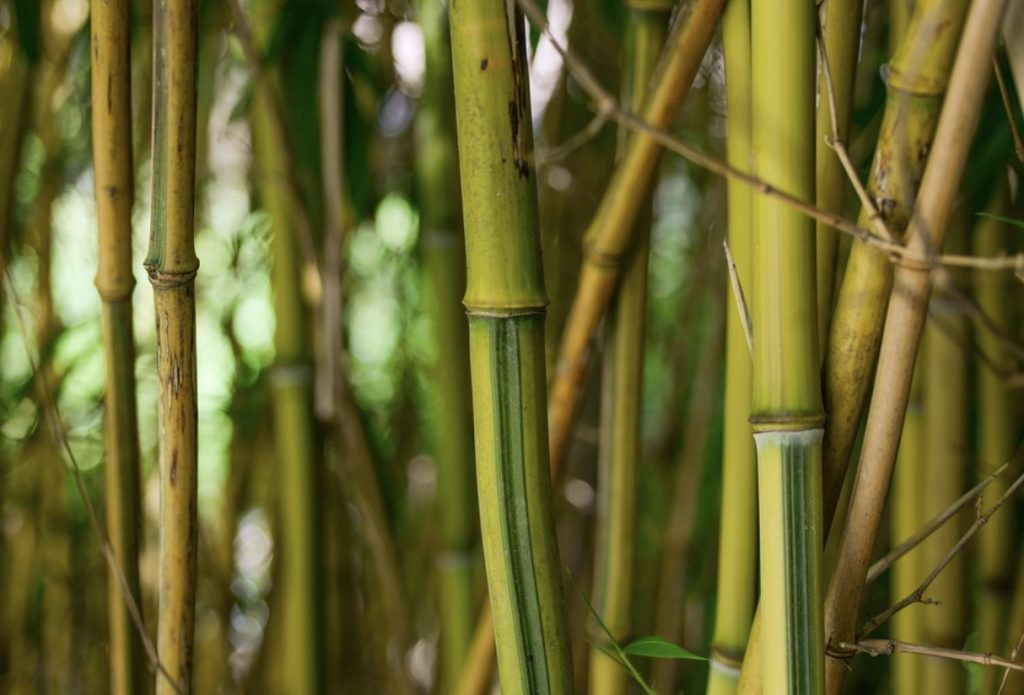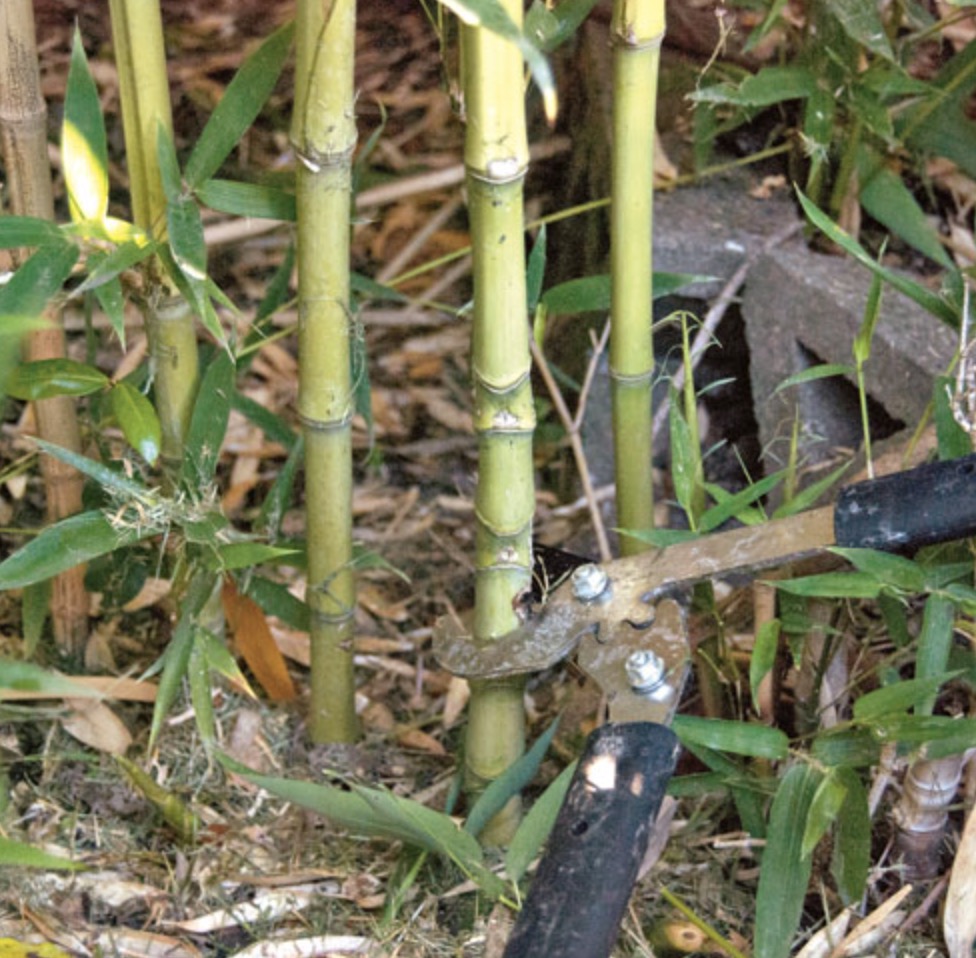In recent years, more and more people have started using bamboo for construction, furniture, and a host of other things due to its quick growth.
If you already have a strong and healthy parent bamboo, there are various ways to increase their numbers in your garden. In the vast majority of techniques, using the cuttings and seeds are great options to spread out more bamboo.
To get it done, follow our article to learn how to propagating bamboo properly and some information you should not ignore!
Propagating Bamboo By Rhizomes And Root Cuttings
In nature, the most effective method for propagating running bamboo is by rhizomes and root cuttings. If you are growing these types of bamboo in the garden, the below steps will help you perform your work properly.
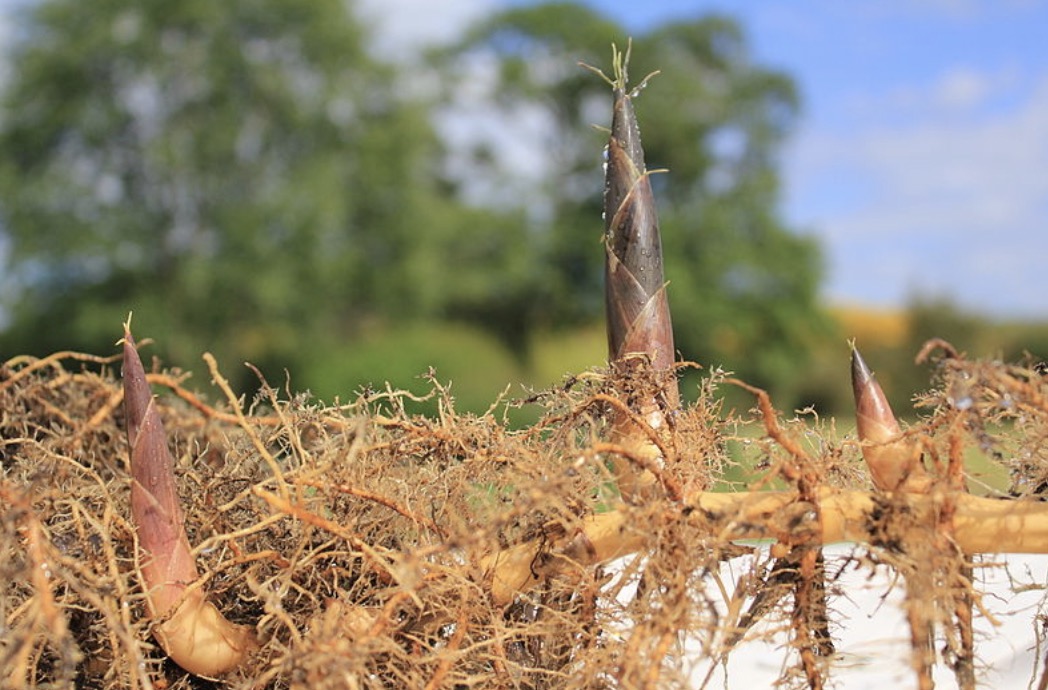
Preparation
First and foremost, the best time to do the rhizome and root cutting propagation is the early spring period. Particularly, the mother bamboo must be kept fairly moist by watering them a day ahead of action time.
Next, prepare some small pots for transplant. One to five-gallon size will properly fit depending on how small or large your cutting pieces are. You can even carry this process out on the ground. Still, we highly recommend newbies to try on small cutting pieces on pots first.
Besides the ready pots, you need to bring some rich soil on hand so that new plants do not suffer from waterlogged situations.
Proper tools for rhizome cuttings would best assist you, including an appropriate spade, sharp knife, and some sharp clippers. Or in case you have to deal with big and heavy specimens, use a saw instead.
The Process
- Lift the end of the rhizome out of the soil and cut off a portion 4 to 6 inches long using a sharp knife. An ideal cutting section must contain at least a few joints and 2 or 3 growth shoots.
More importantly, do not select any sick roots that have a dark or patchy appearance. Instead, you’ve better collect healthy and fresh ones with light, soft, and white tendrils coming off of the roots.
- Put the rhizome horizontally in a pot. Try to keep the cutting segment parallel to the ground and make sure the buds are heading upward. If the attached stalk is longer than expected, it is better to place those ends out of the soil.
- Spread a 3-inch layer of potting soil over the rhizome. You can use sterilized soil as they help prevent disease, insects, and weed seed germination. Remember to press the land firmly so that the buds remain submerged under the dirt.
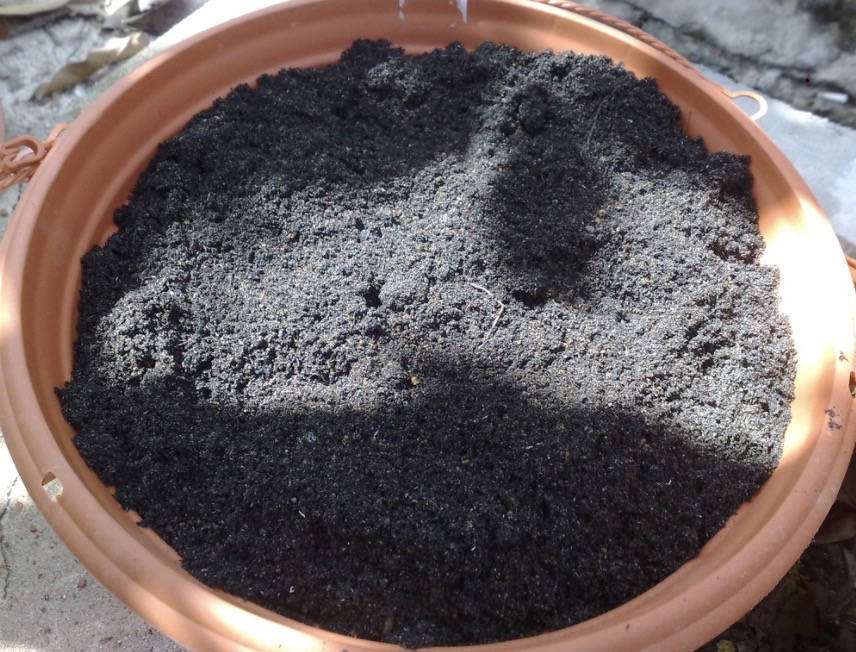
- Water the potted cuttings until the soil looks deeply moist. Using a mister or spray bottle to keep the soil damp but not too muddy on the surface. Check the moisture level daily by sticking your finger to the second knuckle to make sure it is not too dry or overwatered.
- Place the pots in a warm spot under direct sunlight for around 4 to 6 weeks to make your bamboo sprout and grow successfully through the soil. You can plant bamboo grown from rhizomes outside when the nighttime temperatures regularly stay around 13 °C.
Propagating Bamboo With Culm Cuttings
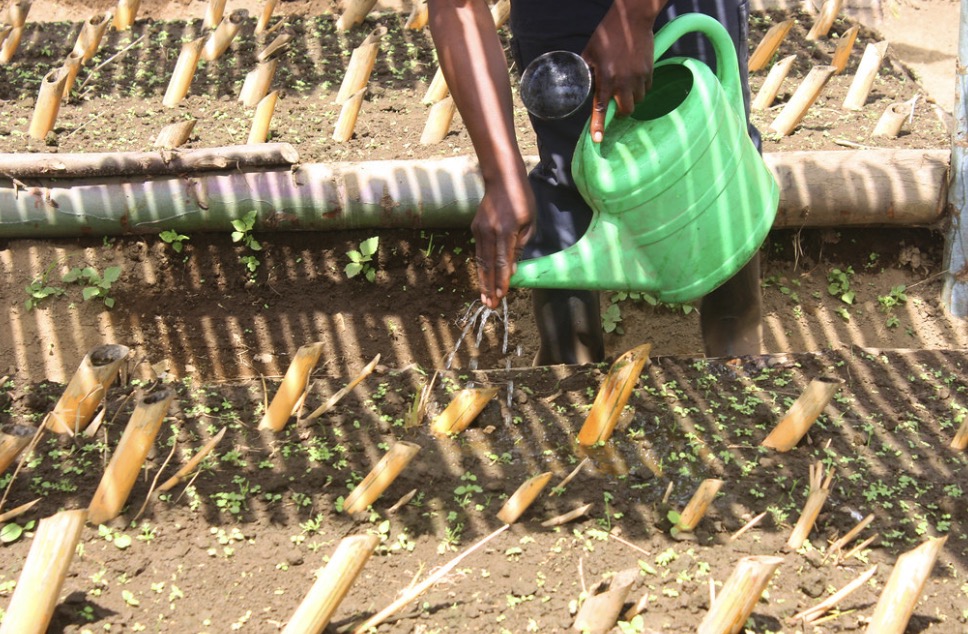
If you have clumping bamboo in the garden, the easiest method to propagate is simply to take a cutting of fresh stem and place it in a warm area for roots growing.
The culm cuttings method is a little more difficult than rhizome and root cuttings. However, the process below will make your job done properly.
Preparation
At first, the culm cutting is most successful with plants that are three to five years old. For best results, a fully grown bamboo with new branches coming out of joints is a great material for propagating.
Choosing and sterilizing the appropriate equipment is also an important step for cutting bamboo preparation. Depending on how thick and huge the parent plant is, you can utilize a sharp knife or a hacksaw. Be sure to sanitize your tools with any household cleaners, such as rubbing alcohol or watery bleach.
The Process
- Cut a selected culm that is at least three years old into a few segments at 10 inches long with a handsaw. Each section you cut should enclose at least 2 or 3 nodes and internodes to get a great reward.
- Fill a pot with a mixture of coarse sand and loam in equal portions to maintain the soil moist and prevent saturation.
- Use a soft wax to seal the first ridges of bamboo cutting. The soy wax or beeswax will help prevent the stalk from rotting or drying.
- Apply two tablespoons of rooting hormone to the culm cuttings. This substance makes the roots progress quicker at the time you move the culm outside. Immerse the cutting in it and quiver the excess rooting hormone.
- Put the cutting into a filled pot until one node is buried entirely. Alternatively, you can place the cutting down horizontally and bury the whole culm.
- Pour the soil with a water bottle until the soil is moist. Don’t forget to fill the center of the culm with water to provide extra humidity for your culm cutting.
- Place the pots in a relatively warm spot under the light shade. Do not forget to check the moisture daily and eliminate the water sitting on the soil’s surface. Also, you can cover the cutting with a clear plastic bag to help the plant maintain moisture.
- Move the bamboo outside after four months of growing in the pot. At this stage, you will see new branches coming out from the nodal joint of each cutting. Continue to grow the plants in the containers or place them directly into the open land when the weather warms up.
Propagating Bamboo From Seed
Propagation from bamboo seeds is one of the slowest methods to propagate bamboo. Tiny seeds are also hard to find on a regular annual basis. Nevertheless, if you do have a bamboo plant’s flower, you should gather and save them for sprouting purposes.
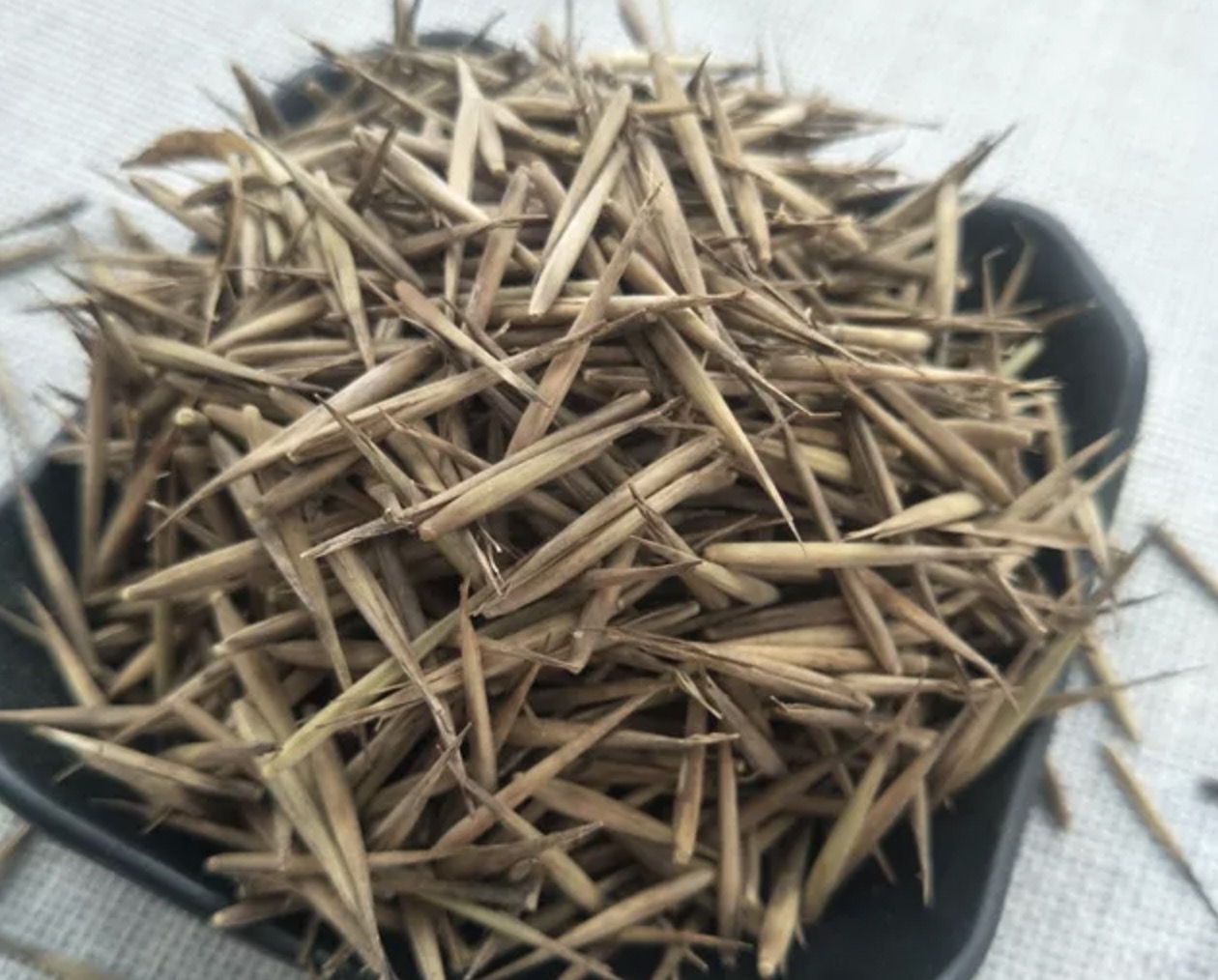
The final product is well worth the effort despite the slow speed if you know the correct procedure. Scroll down to learn more!
Preparation
To start with, take the cropped seeds you had before or buy the bamboo seeds from a reputable supplier to do the propagation process.
A greenhouse kit from gardening stores with a measurement size of around 11 inches is the next device you must prepare. Generally, the kit provides everything you need for planting the bamboo seeds, including a holding tray, peat pellets, and a lid to generate the greenhouse effect.
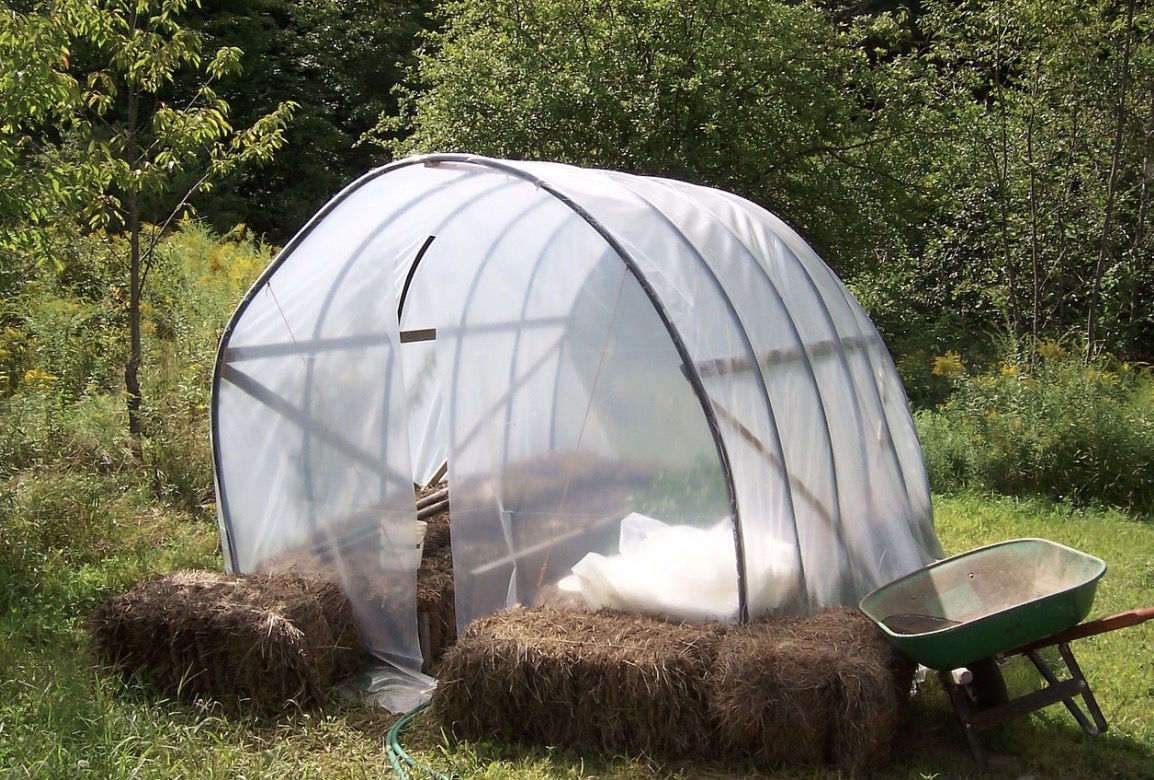
Once this kit is ready, make sure all pallets inside those settings stay damp by pouring halfway water. At this step, you can wait for the pallet to absorb the water by letting them soak up within five to ten minutes until all containers are fully expanded.
Now it is time for you to plant the seeds.
The Process
- Place your bamboo seeds into the water at 30° C and let them sit there for one full day. Use a thermometer to measure the temperature; if not, hot water will cook your seeds right away and decrease your successful possibilities.
- Create a small hole in each of the pallets using a wooden skewer. Then, plant a single seed in the center of the bunk, and be sure to push your finger down the pallet to cover the full seeds.
- Put the greenhouse in a spot within 12 to 16 hours where there is indirect sunlight. It is better to get the greenhouse covered with the lid so that the hot temperatures can not burn your seeds.
Water them each day until you see the pallets are moist enough. Keep watching your plants to see if the sprouts start to touch up, and when you need to take the lid off.
- Transfer the seedlings to larger containers with potting soil added after 30 days. It is fine to put multiple pallets into a single pot. Then, place the transferred pots at a location that consists of half sun and half shade for at least 6 hours.
- Relocate the plants from containers to the ground in the fall season. At this step, you have to dig a hole as deep as possible compared to the current pot and put your transplants here.
Once the plants are completely positioned, water your new bamboo three times per week. Before watering, always check to see if there is any excess moisture or rot suffering.
- Keep an eye on them frequently to find out the visible pests or insects that destroy your plants faster. If you witness these situations, a simple spray from a steady stream of steam water is a useful way to remove unexpected species.
The Bottom Line – How to Propagating Bamboo
Hopefully, with the three guidelines above, you now know how to propagating bamboo and grow new plants successfully with your mother bamboo.
The easiest and fastest way is just to dig up some roots and replant them. If you want to find an adventurous feeling, you can try with nice and fast culm cuttings. Seed propagation is difficult to do, yet, the results should certainly be worth it.
It’s time for you to get yourself to work and create your beautiful bamboo garden. Thank you for your reading, and see you in our next article!
Related Articles
Help Us! Share on:




